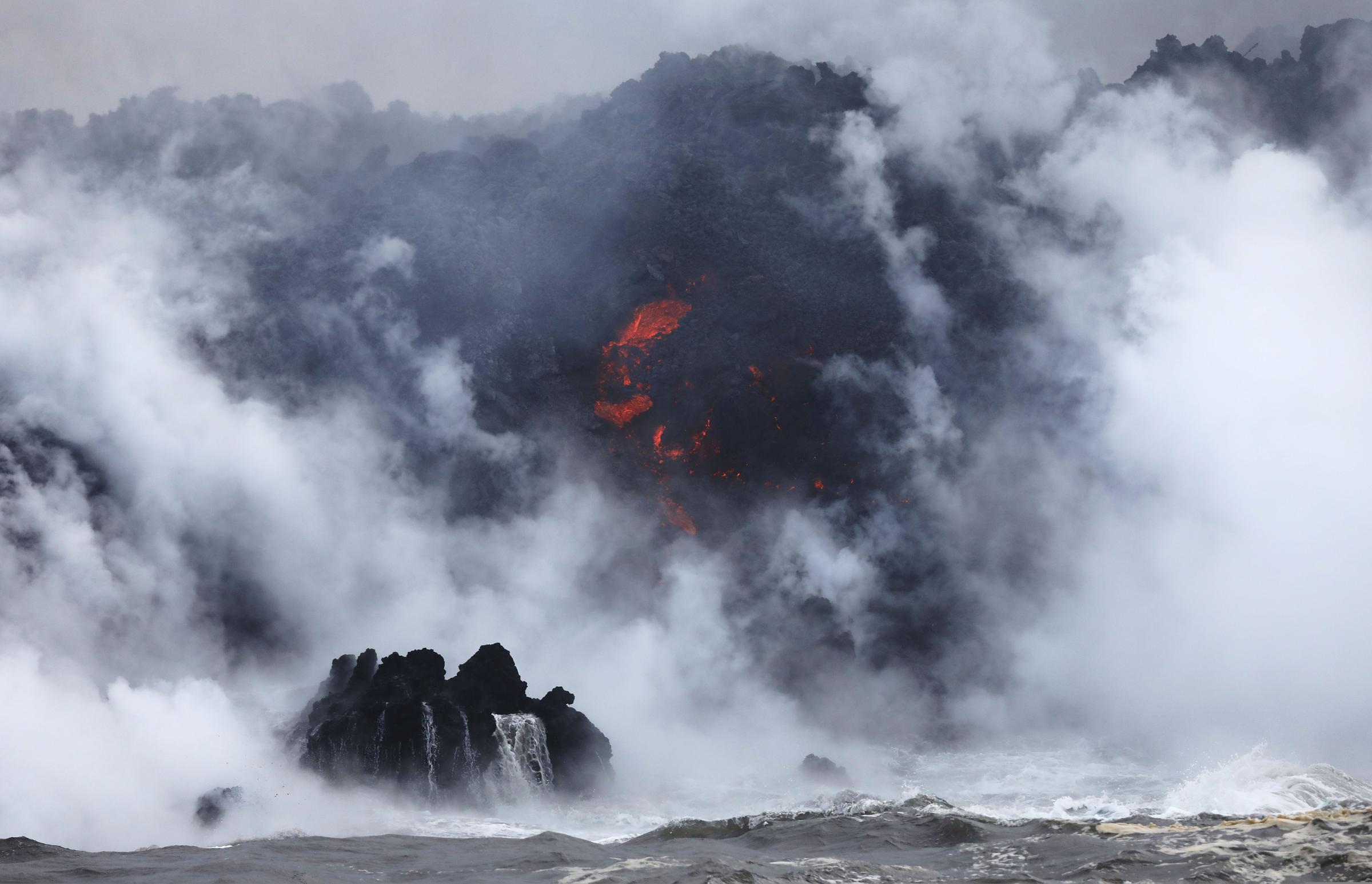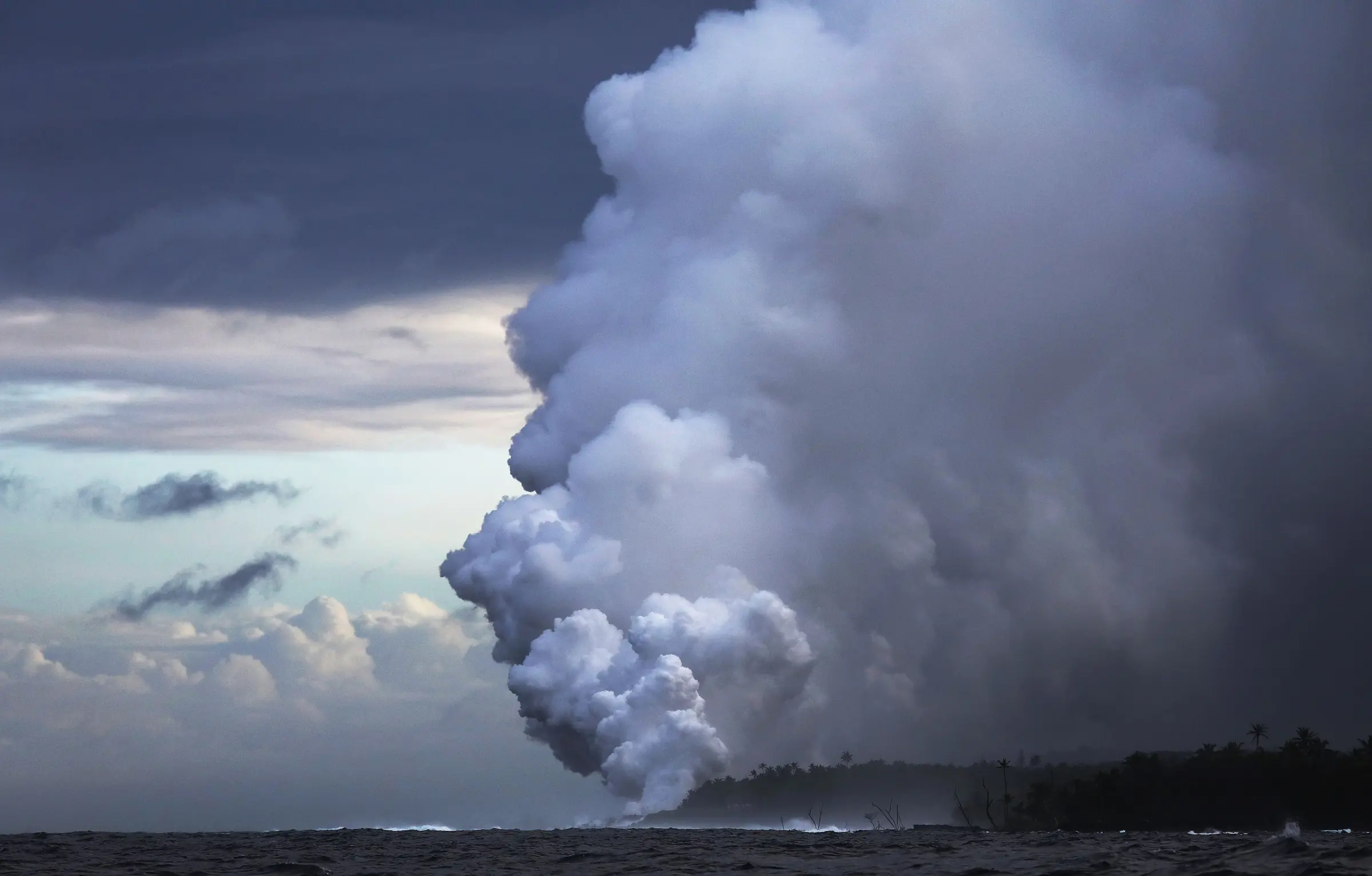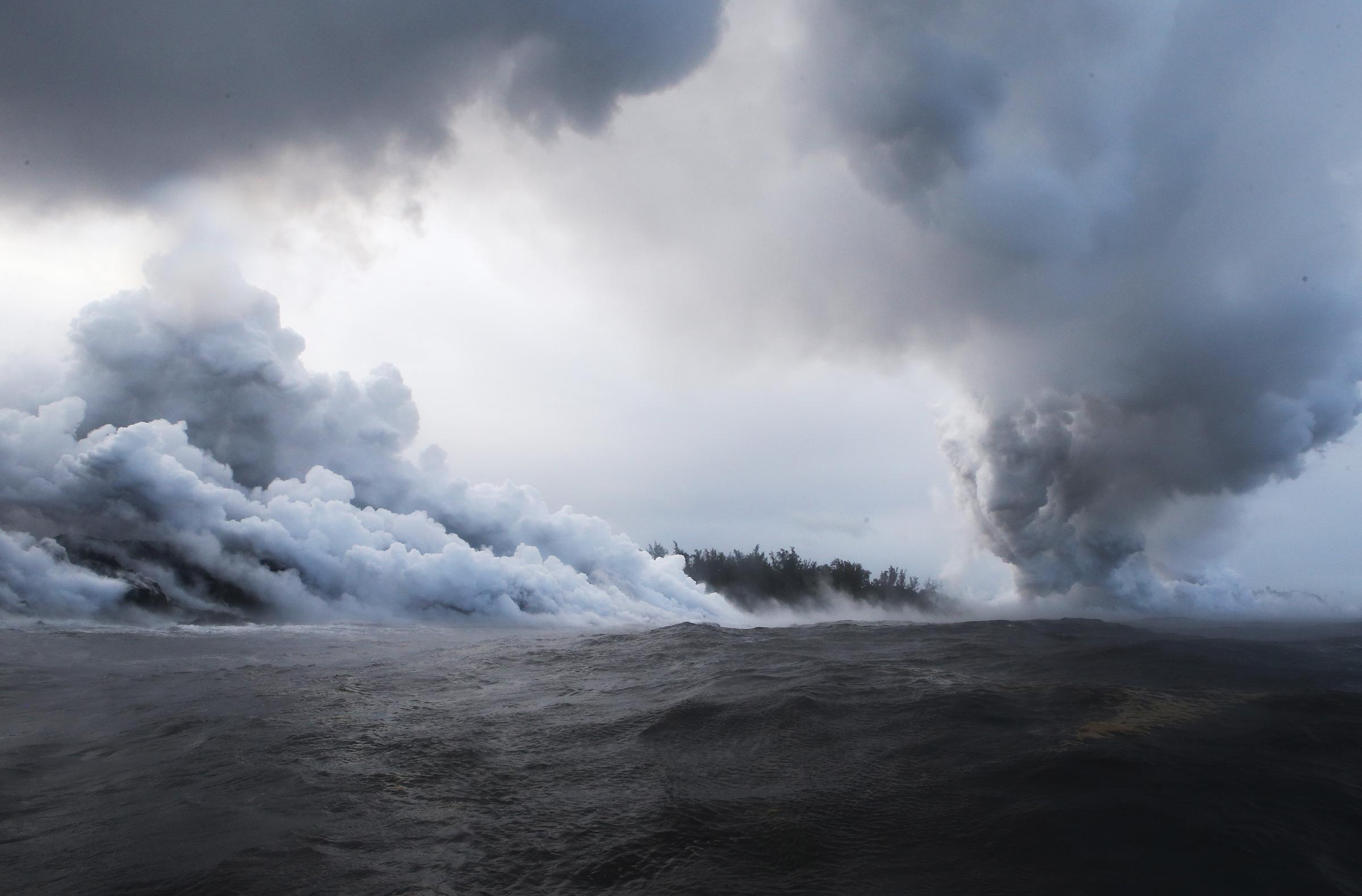A cloud of noxious gases, glass particles and a lava haze known as “laze” is affecting Hawaii after lava from Hawaii’s erupting Kilauea volcano flowed into the Pacific Ocean.
The steam cloud is the latest hazard caused by Hawaii’s Kilauea volcano, which has burned several homes, caused explosive eruptions and forced thousands of evacuations since it started erupting more than two weeks ago.
Now, officials are warning of the risks of lava haze, or “laze,” after lava from Kilauea streamed into the Pacific on Sunday. The interaction of lava and ocean water creates air pollution, as the heat from the lava boils the water dry, according to the U.S. Geological Survey.
Laze can be incredibly dangerous, the USGS said. The laze steam plume rising from the Pacific Ocean contains a mixture of hydrochloric acid gas along with small volcanic gas particles. Anyone who comes into even a little bit of contact with laze can experience breathing difficulties and eye and skin irritation.
The plume rising above the ocean can be blown in various directions, causing poor air quality in nearby areas. See what it looks like when lava and water combine below.



More Must-Reads from TIME
- Cybersecurity Experts Are Sounding the Alarm on DOGE
- Meet the 2025 Women of the Year
- The Harsh Truth About Disability Inclusion
- Why Do More Young Adults Have Cancer?
- Colman Domingo Leads With Radical Love
- How to Get Better at Doing Things Alone
- Michelle Zauner Stares Down the Darkness
Write to Mahita Gajanan at mahita.gajanan@time.com